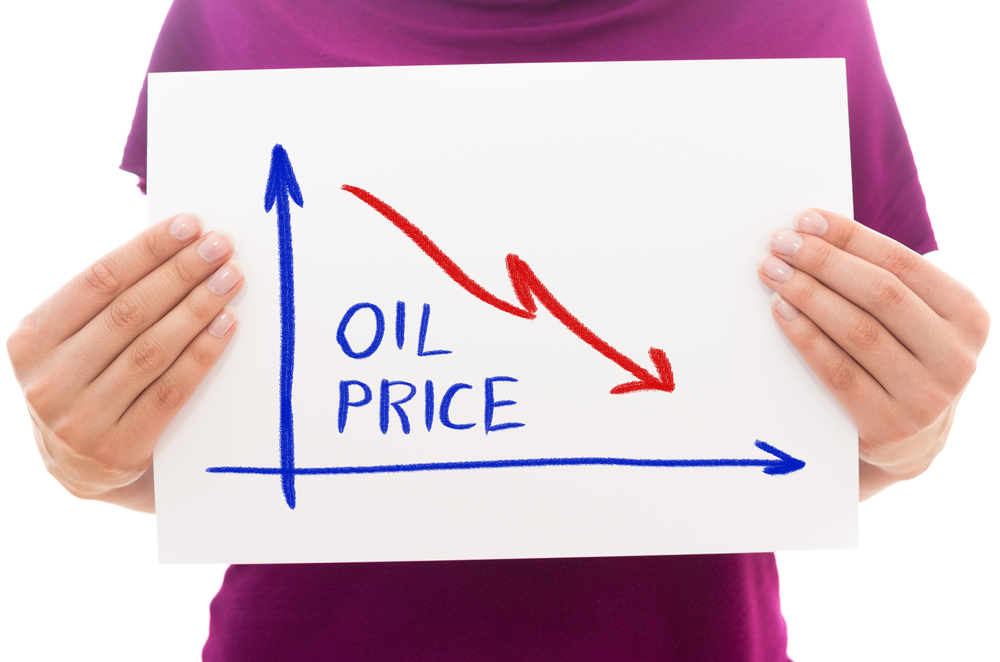Oil Prices Unlikely to Rise as Major Producers Dismiss Production Cuts

Please note that we are not authorised to provide any investment advice. The content on this page is for information purposes only.
As the recent summit of the Organization of the Petroleum Exporting Countries (OPEC) suggests, they will not lower the oil production ceiling, despite great overcapacity. What we are witnessing is not just a cyclical shift, but a new secular tend that heralds the demise of the petrodollar era in the Middle East.
Meltdown of oil prices
As the recent summit of the Organization of the Petroleum Exporting Countries (OPEC) suggests, they will not lower the oil production ceiling, despite great overcapacity. What we are witnessing is not just a cyclical shift, but a new secular tend that heralds the demise of the petrodollar era in the Middle East.
Meltdown of oil prices
After the 1945 Yalta Conference, which effectively divided Europe, President Roosevelt’s subsequent meeting with Saudi King Abdel Aziz Ibn Saud led to a secret agreement, which required Washington to provide Saudi Arabia military security in exchange for secure access to supplies of oil.
The OPEC’s oil embargo following the onset of the Yom Kippur War in October 1973 shook that partnership. As the consequent tension led to fear that the dollar would become insignificant in the oil trade, President Nixon negotiated a deal, in which Saudi Arabia would denominate all future oil sales in US dollars in exchange for arms and protection from the US.
As other OPEC countries subsequently agreed to similar deals, ensuring global demand for US dollars. However, since these dollars did not become part of the normal money supply, they became petrodollars.
After hovering close to $150 per barrel, oil price plunged to $45 during the global crisis. With stimulus packages and recovery policies, the crude Brent price returned to almost $130 by early 2011, but fell again to $110 in the subsequent two years.
The US shale revolution fueled these changes; slowing demand from China and other large emerging economies; rising costs of gas in several Asian economies that have been phasing out fuel subsidies; and particularly the rising dollar, which contributed to the halved oil prices in fall 2014.
The energy producers’ rivalry for market share came out in the open already in the OPEC Summit a year ago. As Saudi Arabia did not cut production on its own, oil prices plunged to sub-$50 per barrel territory.
The Fed, US dollar and oil turmoil
Only a month ago, the International Energy Agency reported that more cheap oil could cause the OPEC revenue to plunge from the $1 trillion average in the past five years to $550 billion. As a result, cash-strapped energy producers, including Venezuela, Ecuador and Algeria lobbied Saudi Arabia to cut production in the recent OPEC Summit in Vienna. The group still accounts for about 40% of total output worldwide.
Iran said OPEC should reduce production to make room for its return to the market. Officially, the group’s production ceiling is 30 million barrels a day; in practice, it has been over 32 billion in the past 1.5 years. As sanctions lift, Iran will generate an additional 0.5 million a day. Indonesia left OPEC in 2008 but returned and seeks to pump some 0.8 million a day.
Without participation by big producers outside OPEC, Saudi Arabia will not engage in production cuts. Riyadh believes that a sharp oil price recovery could revive some US shale production, which would displace OPEC crude.
Before the Summit, Brent crude closed at $43, the lowest since 2009 amid the global crisis. While some analysts expect a year-end rally to push the price climb to $55-$60 in the short-term, skeptics anticipate further price deterioration in 2016. That will harm oil exporters, but support large importers, including China.
There is more ahead. US dollar and oil have an inverse relationship. When dollar goes up, oil tends to come down. Moreover, oil is denominated in US dollars and intertwined with the Fed’s policy rate.
While emerging market currencies recently slumped to 15-year lows, Janet Yellen’s Fed is preparing to hike interest rates. That is bound to increase turbulence in emerging and developing economies, and particularly in those that depend on oil exports – from the Middle East and Africa to Asia and Americas.
Oil price meltdown heralds new wave of destabilization is republished with permission from The Difference Group




